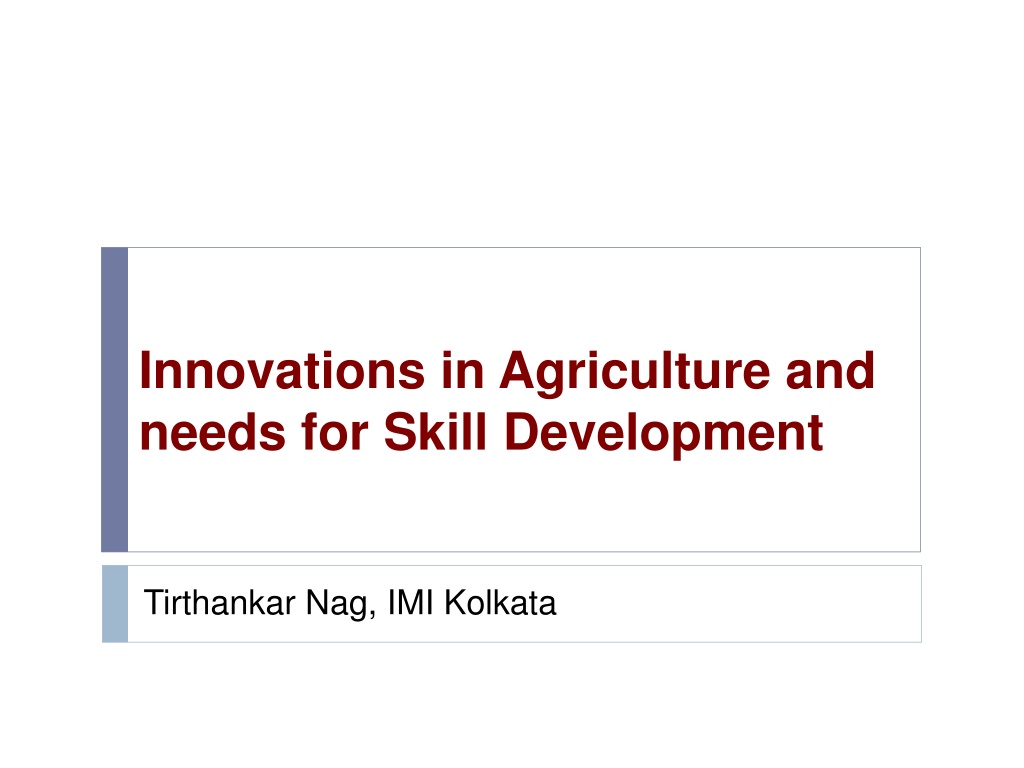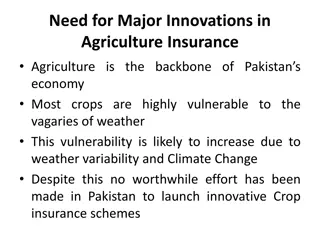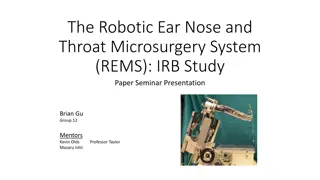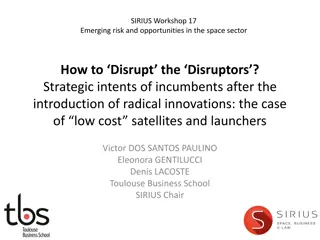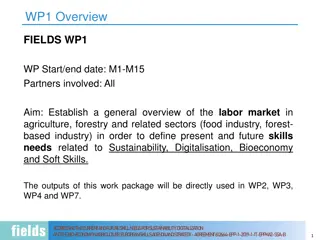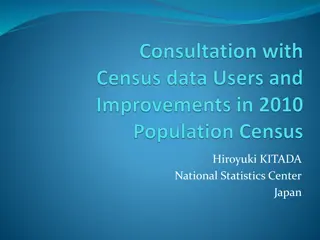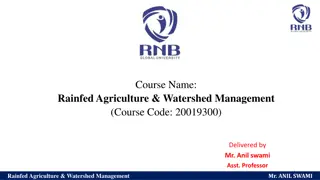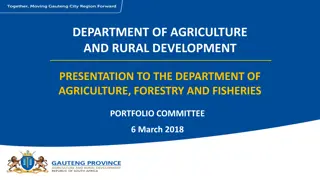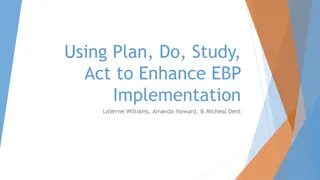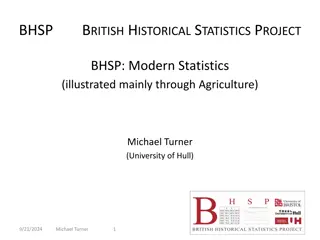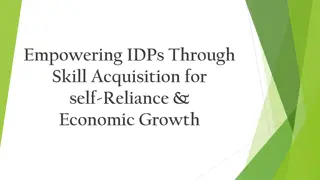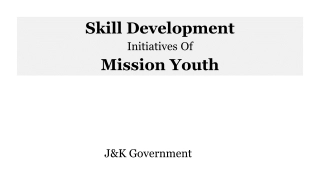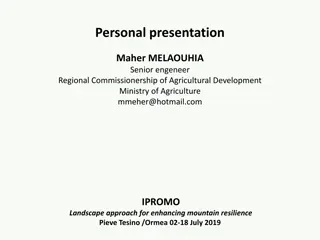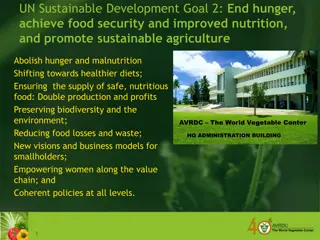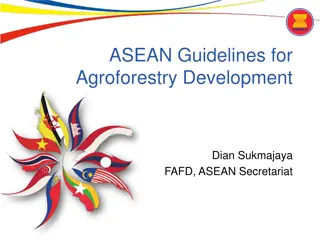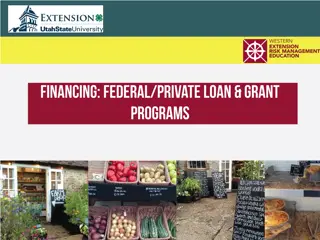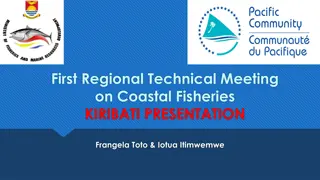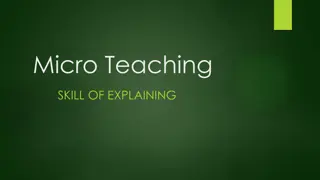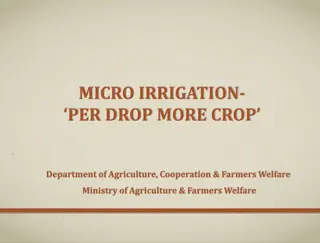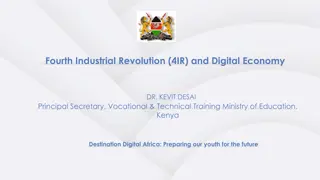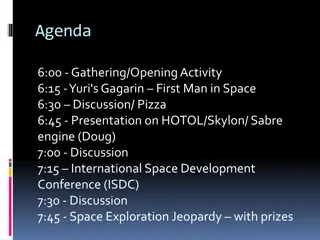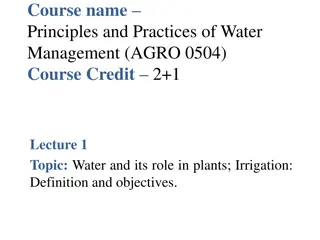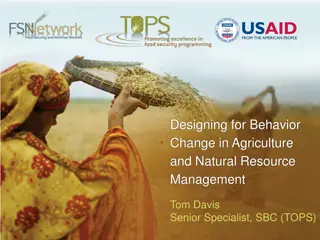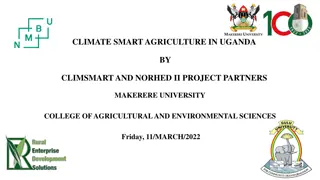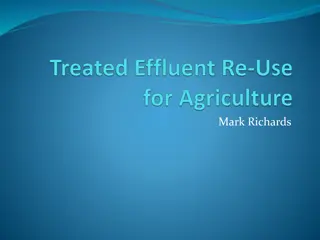Agriculture Innovations and Skill Development Challenges
Agriculture sector in India faces challenges related to productivity, income, and resource use. Innovations and skill development are crucial for sustainable growth. Evolutionary economics emphasizes the role of knowledge and capabilities in driving innovation. Agriculture contributes significantly to India's GDP, but there is a need to enhance labor productivity and transition to non-farm work for better wages.
Download Presentation

Please find below an Image/Link to download the presentation.
The content on the website is provided AS IS for your information and personal use only. It may not be sold, licensed, or shared on other websites without obtaining consent from the author. Download presentation by click this link. If you encounter any issues during the download, it is possible that the publisher has removed the file from their server.
E N D
Presentation Transcript
Innovations in Agriculture and needs for Skill Development Tirthankar Nag, IMI Kolkata
Introduction Increasing focus on Farm productivity Farm incomes Sustainable agriculture Inefficiency and overuse of resources (Banik, 2015) Average Monthly Income and Expenditure Per Agricultural Household in 2013 Rs./month per household Size in Hectare s Income from Wages Net Net Net Total Income Consumpti on Surplus /Savings Receipt from Cultivation Receipt from Farmin g of Animal s Receipt from Non- farm Busines s 3,019 31 1,223 469 4,742 5,139 (397) <0.01 2,557 712 645 482 4,396 5,402 (1,006) 0.01 0.40 0.41 1.00 1.01 2.00 2.01 4.00 4.01 10.00 >10.00 2,072 2,177 645 477 5,371 5,979 (608) 1,744 4,237 825 599 7,405 6,430 975 1,681 7,433 1,180 556 10,849 7,798 3,051 2,067 15,547 1,501 880 19,995 10,115 9,880 1,311 35,713 2,616 1,771 41,412 14,445 26,967 All India Source: (Chandrasekhar & Mehrotra, 2016) 2,146 3,194 784 528 6,653 6,229 424 2
Agenda 1. Challenges and Innovations 2. Skilling Needs 3
Innovation Evolutionary economics and strategic management have influenced the innovation discourse. The theory of the firm mentions knowledge as an important driver. The resource based view views knowledge based capabilities as a competitive asset and a driver for innovation and growth (Almeida & Phene, 2012). Even with similar resource endowments, there may be a wide heterogeneity in performance (McGahan & Porter, 1997). Some studies attribute the difference in performance to certain unobserved or latent factors or capabilities (Rumelt, 1991). In fact certain capabilities play a key role in influencing innovation pathways (Penrose, 1959). Dynamic capabilities focus on capabilities related to change and innovation (Teece, Pisano, & Shuen, 1997). There is general agreement that innovation requires knowledge, ingenuity and focus and is capable of being practiced (Drucker, 2002). Others simply describe innovation as ideas that create the future (Kanter, 2006). Christensen s classic Disruptive Innovation could perhaps be interpreted as those which would make products and services more accessible and affordable. 4
Agriculture and Allied Sectors in India % of Agriculture, forestry & fishing in Gross Value Added by economic activity 20% 18% 16% 14% 12% 10% 8% 6% 4% 2% 0% 2011-12 2012-13 2013-14 2014-15 2015-16 Source: National Account Statistics, MOSPI constant 2011-12 prices 5
Labor productivity and wages Transition in composition of output and occupation from agriculture to non-farm Worker productivity (at current prices) across different worker categories in India (Rs./worker) Year Agricultural labour Cultivator Farm workers Non-farm rural workers All rural workers Urban 1970-71 821 1,114 1,018 2,294 1,203 3,829 1980-81 1,788 2,425 2,216 6,248 2,878 8,456 1993-94 5,040 12,271 9,410 25,822 12,947 38,934 1999-00 9,246 22,807 17,059 51,789 25,380 89,180 2004-05 10,480 25,183 19,933 82,990 37,273 1,20,419 2011-12 33,937 77,144 62,208 1,71,836 1,01,755 2,82,515 Source: Indiastat 6
Crop Productivity, Tonnes/Hectare 7 Source: OECD
Rice Productivity, Tonnes/Hectare Source: OECD 8
The Agri Value Chain Sowing Growing Harvesting Post Harvesting Seeds (native, commercial. Hybrid, GMO) Equipment Finance Labor Fertilizers Insecticides Pesticides Irrigation (sprinkler, drip, others) Finance Labor Information weather, practices, markets Equipment Market access and logistics Finance Labor Procurement Produce marketing Processing & Retail Machinery Finance Advisory 9
Sowing Seeds Farm saved seeds to commercial/certified seeds Hybrid/BT seeds for certain crops Equipment Farm mechanisation Sowing Practices Precision farming Seeds used in lakh quintals 350 300 250 200 150 100 50 0 1983 1985 1987 1989 1991 1993 1995 1997 1999 2001 2003 2005 2007 2009 2011 2013 2015 Breeder Seeds Certified/Quality Seeds Source: CMIE Foundation Seeds 10
Growing Fertilizers in in lakh tonnes Pesticides in in thousand tonnes 300 80 70 250 60 200 50 150 40 30 100 20 50 10 0 0 1951 1956 1960 1964 1968 1972 1976 1980 1984 1988 1992 1996 2000 2004 2008 2012 1951 1971 1973 1981 1983 1985 1987 1989 1991 1993 1995 1997 1999 2001 2003 2005 2007 2009 2011 2013 2015 Consumption Production Imports Source: CMIE Fertilizers and agrochemicals per hectare are on the rise, though much below other economies. 11
Harvesting and Post Harvesting Harvesting Information through digital devices Weather information Crop Insurance Crops Cumulative wastage (%) 4.65 5.99 6.36 8.41 3.08 9.96 4.58 15.88 0.92 5.23 10.52 2.71 6.74 Cereals Pulses Oil Seeds Fruits & Vegetables Milk Fisheries (Inland) Fisheries (Marine) Meat Poultry Post harvesting losses Storage Market Access Financing Source: Ministry of Food Processing Industries 12
Cropping Patterns Region Present System Net return (Rs/ha Other cropping possibilities Net return (Rs/ha) Rice-wheat 16,749 Rice-toria 22,333 Kahikuchi, Assam Rice-wheat 30,291 Rice-potato 67,496 Chhattisgarh Soyabean-wheat 29,851 Rice-wheat 36,399 Ambala, Haryana Sorghum-wheat 13,602 Maize-wheat 22,188 Ambala, Haryana Rice-wheat 33,378 Rice-groundnut 46,504 Nasik, Maharashtra Wardha, Maharashtra Soyabean-wheat 25,008 Soyabean-gram 32,327 Rice-wheat 50,388 Rice-mustard 66,887 Faridkot, Punjab Rice-mustard 52,537 Rice-wheat 63,352 Ludhiana, Punjab Source: Shukla & Shukla, Scope and Limitations of Crop Diversification in Indian Agriculture, 2007 13
Penetration of Innovations Post Sowing Growing Harvesting Harvesting Process & Practices Sowing techniques Optimizing cropping systems Quality of seeds Irrigation drip irrigation etc. Harvesting time Logistics & Supply Chain Inputs Agrochemicals Balanced usage Water and energy Storage Procurement, distribution & retail Market price Finance Credit markets, Microfinance Kissan Credit Cards Crop Insurance Agrotech seed quality, BT Equipment Technology Farm mechanisation Farm mechanisation Information systems 14
Agenda 1. Challenges and Innovations 2. Skilling Needs 15
Skilling Needs Urban migration and wage differentials towards non farm jobs Skilling for maintaining and learning from Traditional Practices In Indonesia, there is a practice of agriculture and pisciculture being carried out together during cultivation. Understanding information systems Information about crop yields, crop substitution possibilities, price trends of crops, alternate cropping methods for increasing yield of crops etc. Skilling for yield improvement Increasing access to other markets like seeds, fertilizers, pesticides, water etc. through improved credit delivery systems. Skilling for understanding pricing signals Increasing access to product markets and establishment of backward/forward linkages. Skilling for understanding and leveraging risk coverage mechanisms. Skilling for understanding the agriculture supply chain 16
Skilling Needs Skilling for adopting new technology Skilling for tapping farm credits and understanding interest rates and other conditions Access to credit markets Assessing credit quality is a major issue for the lender in the case of farm credits Signalling mechanisms and proxies 17
International Management Institute Kolkata, 2/4 C Judges Court Road, Alipore, Kolkata - 700 027. Contacts Tirthankar Nag t.nag@imi-k.edu.in +91 9748753373 Thank You 18
